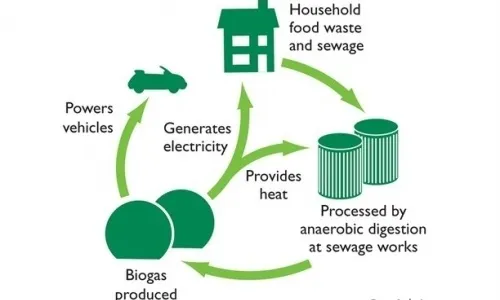
The Basics of Waste to Energy
It is a cutting-edge approach to addressing two critical challenges of our time: waste management and sustainable energy production. As the global population continues to grow, so does the generation of municipal solid waste, leading to overflowing landfills and increased greenhouse gas emissions. Simultaneously, there is a growing demand for cleaner and more sustainable sources of energy to combat climate change. Waste to energy presents an innovative solution by converting non-recyclable materials into electricity or heat, reducing the environmental impact of landfills and contributing to a greener energy mix.
It is also known as energy recovery, involves the conversion of various types of waste, including municipal solid industrial, and agricultural residues, into energy forms like electricity, heat, or even biofuels. The process typically follows these steps:
Waste Collection and Preparation: Non-recyclable and non-compostable waste materials are collected and sorted to remove any hazardous or unsuitable items. This step is crucial to ensure that only suitable waste is fed into the WtE facility.
Incineration or Gasification: The sorted waste is subjected to high-temperature processes, either incineration or gasification. Incineration involves the combustion of waste, while gasification uses heat and a controlled environment to convert waste into syngas, a mixture of carbon monoxide and hydrogen.
Energy Generation: The heat produced during incineration or gasification is used to produce steam, which drives a turbine or generator to produce electricity. This electricity can be fed into the grid or used locally.
Residue Handling: The ash produced during incineration contains the non-combustible materials and is disposed of in an environmentally responsible manner. Gasification residue can also be handled similarly.
Environmental Benefits
Reduction in Landfilling: Waste to energy significantly reduces the volume of waste that ends up in landfills. This not only conserves valuable land resources but also mitigates the environmental risks associated with landfilling, such as soil and water contamination and the release of methane, a potent greenhouse gas.
Greenhouse Gas Emission Reduction: By converting waste into energy, WtE facilities can capture and utilize methane emissions from landfills, which would otherwise be released into the atmosphere. Methane is a potent greenhouse gas, and its capture for energy generation helps reduce the overall carbon footprint.
Energy Recovery: WtE facilities contribute to the diversification of the energy mix by producing electricity or heat from a non-fossil fuel source. This helps reduce dependence on fossil fuels and supports the transition to cleaner and more sustainable energy sources.
Resource Conservation: It facilities recover valuable metals and other materials from the waste stream, promoting resource conservation and reducing the need for raw material extraction and production.
Challenges and Considerations
While waste to energy offers numerous environmental benefits, it is not without challenges and considerations:
Emissions Control: The incineration process can release pollutants into the atmosphere, including dioxins, heavy metals, and nitrogen oxides. Modern WtE facilities employ advanced technologies to minimize these emissions, but effective regulation and monitoring are essential.
Waste Composition: The efficiency of WtE processes depends on the composition of the waste stream. A high proportion of non-combustible or hazardous materials can reduce the energy recovery potential and increase the environmental impact.
Public Perception: Waste to energy projects can face opposition from communities concerned about emissions and health impacts. Transparent communication and robust environmental controls are critical to addressing these concerns.
Competing with Recycling: Some argue that WtE may discourage recycling efforts if perceived as a solution to waste management. To maximize sustainability, WtE should complement recycling and waste reduction initiatives.
Global Adoption
Waste to energy has gained traction worldwide as a vital component of sustainable waste management and energy diversification. Countries like Sweden and Denmark have successfully integrated WtE into their waste management systems, with over 50% of their municipal solid waste being converted into energy. In the United States, WtE facilities exist in several states, providing both renewable energy and waste reduction benefits.
The European Union has set ambitious targets for reducing landfilling and increasing energy recovery from waste. This has spurred the development of state-of-the-art WtE facilities across the continent. China has also seen significant growth in WtE projects, driven by the need to manage rapidly increasing urban waste.
Conclusion
Waste to energy represents a powerful synergy between waste management and sustainable energy production. By converting non-recyclable waste into electricity, heat, or biofuels, WtE not only reduces the environmental impact of landfills and curbs greenhouse gas emissions but also contributes to a more diverse and sustainable energy mix. As countries around the world grapple with mounting waste challenges and the urgent need to transition to cleaner energy sources, waste to energy offers a compelling solution that aligns with the goals of environmental protection and energy sustainability. However, it is crucial to implement robust environmental controls, engage with local communities, and maintain a commitment to recycling and waste reduction to maximize the benefits of this innovative technology.
